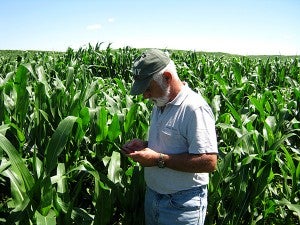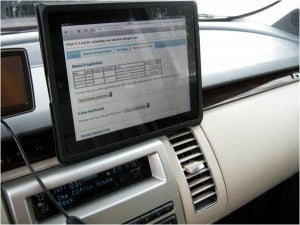 It is no surprise that information has value in the technology age. A recent article in the New York Times spotlights an Indiana farming family to show how information is shaping 21st century agriculture.
It is no surprise that information has value in the technology age. A recent article in the New York Times spotlights an Indiana farming family to show how information is shaping 21st century agriculture.
Kip Tom, a seventh-generation farmer, is riding the wave of agricultural consolidation that, since the 1980s, has led to bigger farms, bigger technology, and now, bigger data.
Bigger revenues have come along with this transition. Tom says better data analysis has raised his return on investment over seven percent – from 14 percent to 21.2 percent.
Good for the farm, good for the environment
Equally important, better use of farm data creates value for the environment. Many of the technological and information innovations in agriculture increase efficiency of farm inputs, such as fertilizers and pesticides.
When used in excess, fertilizer runs into water, where it contributes to dead zones and drinking water pollution. It also emits a powerful greenhouse gas that speeds the pace of climate change.
These environmental impacts are costly to society, plus wasted fertilizer puts a dent in farmers’ wallets – every bit of lost fertilizer reduces profits. Crop prices have fallen in 2014 while fertilizer prices have mostly remained stable, which means farmers cannot afford to spend money on fertilizer that their crops don’t need.
The challenge of fertilizer management
The solution seems simple – better use of data that will help farmers use fertilizer more efficiently and create value for both the farmer and the environment. However, even for farmers who embrace new technology, fertilizer management remains a challenge.
The problem is that agriculture, no matter how advanced, still operates within a natural system with many changing variables. Changes in temperature and rainfall affect whether nutrients are absorbed by crops or released into the water or air.

Adapt-N technology being used on an iPad
Furthermore, many farmers face challenges in adopting new technologies. Tom is described as a “chief technology officer” for his farm, and his level of expertise requires substantial investments of time and money to develop.
New technologies require new support for farmers
For farmers to capture the value that better data can provide, two things must happen. First, they need better fertilizer efficiency tools, technologies, practices, and products.
Second, farmers need assistance in order to use the new technologies. This is a clear role for agricultural service providers, equipment companies, crop consultants, and university extension agents.
For example, EDF’s collaboration with United Suppliers is creating SUSTAIN, a platform that can help growers select practices that improve fertilizer efficiency. Efforts like SUSTAIN are critical because it’s not enough simply to point out potential savings to farmers.
To capture the value of the information age, farmers need support in following the adage that “you can’t manage what you don’t measure.”









